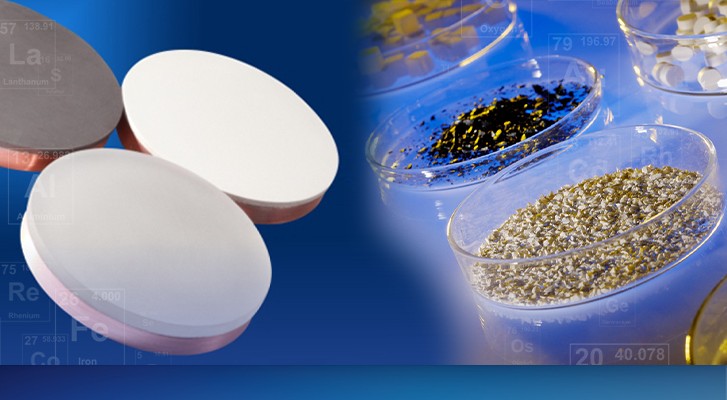Why is Target Bonding so Important in Sputtering Processes?
In thin-film deposition, target bonding plays a crucial role in making a difference to efficiency, longevity and stability. While sputtering targets can be simply clamped to the cathode, this approach often leads to cracking, warping or other damage due to inadequate cooling. To prevent such issues, bonding the sputter target to a strong, compatible backing plate is highly recommended.
As a trusted supplier of advanced sputtering materials, Testbourne offers comprehensive target bonding services that ensure optimal performance and longevity for your sputtering targets.
Why Target Bonding Matters
Proper target bonding provides several advantages in the sputtering process:
- Extends Target Life: A well-bonded target is less likely to crack, warp, or suffer from other stress-related issues, leading to longer usage.
- Improves Sputtering Performance: A bonded target can handle higher power inputs, allowing for faster sputtering rates and more efficient deposition.
- Ensures Process Consistency: By reducing stress and ensuring a more stable target, bonding helps maintain consistent thin-film parameters, which is essential for high-quality coatings.
- Prevents Bonding Failures: Effective bonding techniques can mitigate the shear stresses caused by temperature variations during sputtering, reducing the risk of failure when target materials and backing plates have differing thermal expansion rates.
Types of Target Bonding Methods
At Testbourne, we understand that the bonding method must be tailored to the specific sputtering target material to ensure the best performance. We offer a range of bonding solutions to meet diverse application needs and materials.
Indium-Based Metallic Bonding
Testbourne uses Indium-based metallic bonding to create targets with exceptional thermal and electrical conductivity. Indium bonding is ideal for DC or RF power supplies and offers a long-lasting, secure connection between the target and the backing plate.
Advantages of Indium Bonding:
- Ensures superior thermal and electrical conductivity for effective heat dissipation.
- Includes a sputtered metal intermediate layer to protect the target material from diffusion and preserve its integrity.
- Effective for temperatures up to 156°C, making it suitable for most sputtering processes.
- Ideal for high-precision, low-stress applications that demand long-term performance.
Elastomer Bonding
Elastomer bonding is a unique cost-effective alternative to indium bonding, especially for applications where indium may be impractical due to cost or material compatibility. This bonding technique has been developed and refined at Testbourne to meet the growing demand for more sustainable and flexible bonding options.
Advantages of Elastomer Bonding:
- High operational temperature of up to 250°C for more demanding applications.
- Low cure temperature reduces internal stress, preventing fractures and improving target durability.
- Allows for larger dimensions in bonded targets (up to 120" x 110"), increasing production yields.
- Facilitates bonding of new materials, expanding the types of targets available for sputtering.
- Very low mass change (<1%) at 250°C under vacuum conditions, ensuring stable performance.
Silver-Filled Epoxy Bonding
For users looking to bond targets in-house, Testbourne offers silver-filled epoxy bonding kits that provide excellent thermal and electrical conductivity. These kits are an ideal solution for those who prefer a DIY approach without compromising on performance.
Advantages of Silver-Filled Epoxy Bonding:
- Over 90% high-purity silver for superior thermal and electrical conductivity.
- Available in 50g, 100g and 250g packs, offering flexibility for different bonding needs
- Low outgassing characteristics make them ideal for high-vacuum applications.
Choosing the Right Backing Plate
The backing plate is an integral part of the bonding process. Testbourne supplies a variety of materials suitable for backing plates, depending on your specific needs:
- Oxygen-Free High Conductivity (OFHC) Copper is the most used backing plate material, known for its excellent thermal and electrical properties. It is easy to machine and provides reliable performance in most sputtering applications.
- For situations where copper is incompatible with the target material, Testbourne also offers aluminium, molybdenum and stainless-steel backing plates. These materials can be chosen based on factors such as thermal expansion compatibility or specific process requirements.
In many cases, Testbourne can also recover and reprocess backing plates from used assemblies, cleaning and inspecting them to ensure they meet specifications for reuse in new sputtering targets, offering a cost-effective and sustainable solution.
Testbourne's Commitment to Quality
At Testbourne, we understand that proper target bonding is essential for ensuring the efficiency and longevity of sputtering systems. With years of expertise and a focus on high-quality materials and services, Testbourne is your trusted partner in sputtering target solutions. We offer a range of bonding methods to meet different sputtering needs and ensure consistent results across a variety of industries.
Whether you're looking to bond a target yourself using our silver-filled epoxy kits or need advanced bonding techniques like Indium-based or Elastomer bonding, we’re here to support your thin-film deposition processes. Contact us today if you have a question about our products.

